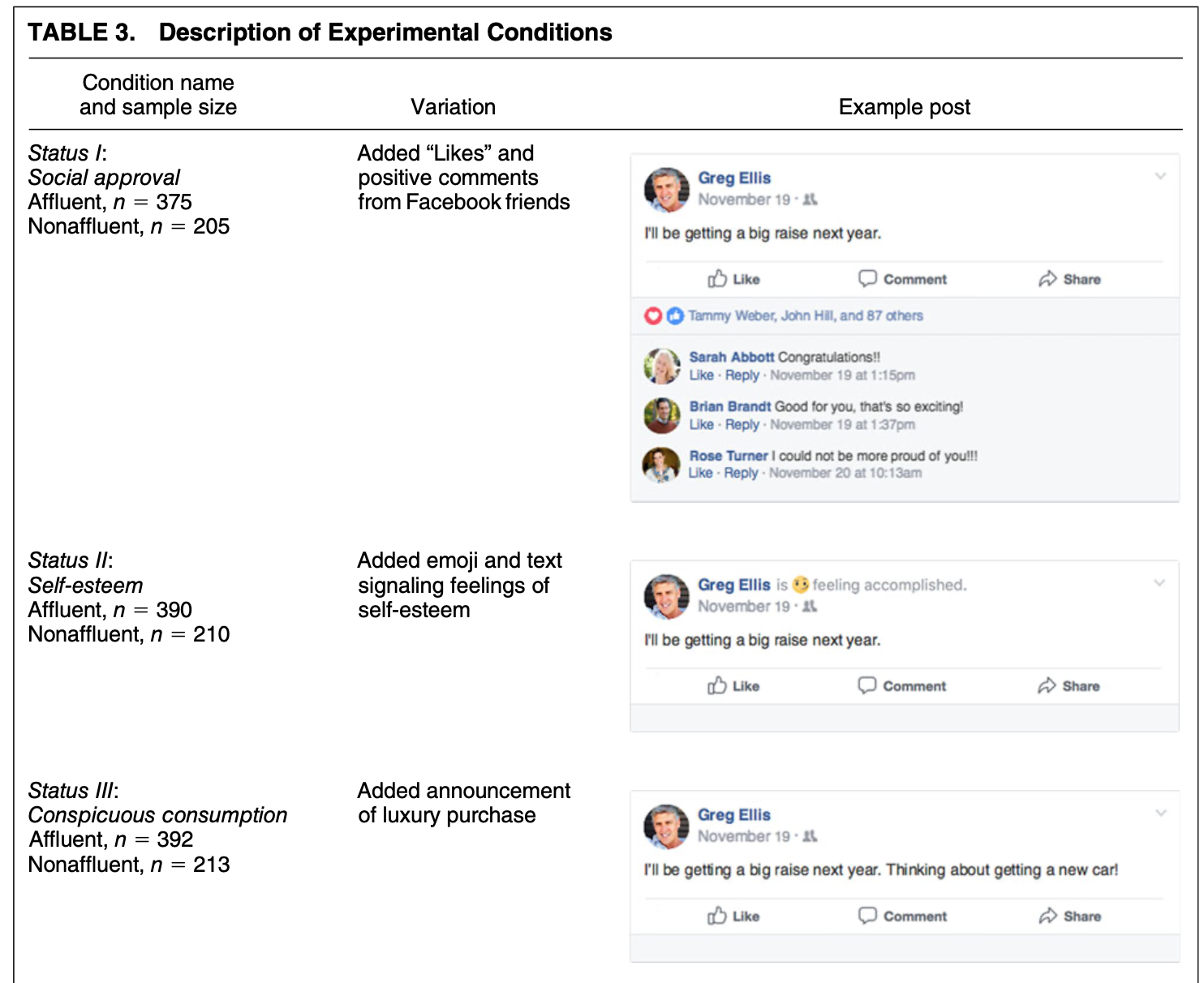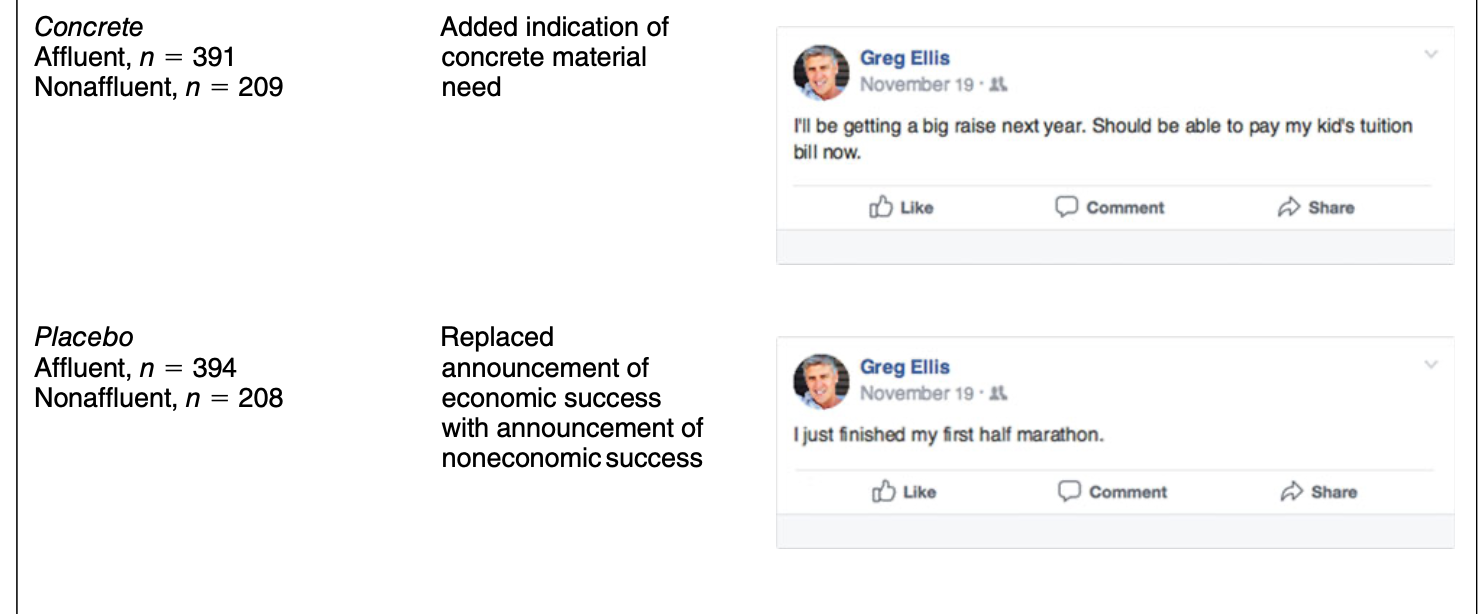4.1 Application: Social Status and Economic Views
We are going to explore different types of visualizations through different social science examples. The first application we visit is a survey experiment.
Thal, A. (2020). The desire for social status and economic conservatism among affluent Americans. American Political Science Review, 114(2), 426-442.
In the experiment, affluent Americans are randomly assigned to encounter Facebook posts in which others broadcast their economic success. These posts are designed in a way that encourages affluent respondents to view economic success as a means of achieving social status.
Causal claims
- “I expect that exposure to these posts will cause affluent Americans to become more supportive of conservative economic policies.”
- “I also expect that exposure to these posts will cause especially large increases in economic conservatism among affluent men.”
The experiment includes a sample of 2010 affluent Americans– people who report household incomes in the top 10 percent of the U.S. income distribution.
Experiment Ingredients:
- Causal Question: Does desire for social status influence economic views of affluent Americans?
- Recruitment: Ask affluent Americans to take a survey online
- Randomization: Randomly assign respondents to view different fictional Facebook posts designed to signal different motivations
- Outcome: an index based on respondents’ support for decreasing “taxes on households making $150,000 or more a year,” support for decreasing the “taxes on money people make from selling investments, also referred to as capital gains,” and support for decreasing “government regulation of business and industry.”
- Comparison: Average economic views between experimental conditions.
Snapshot of status conditions

Snapshot of Concrete and Placebo comparison conditions

Can you put this into the potential outcomes framework?